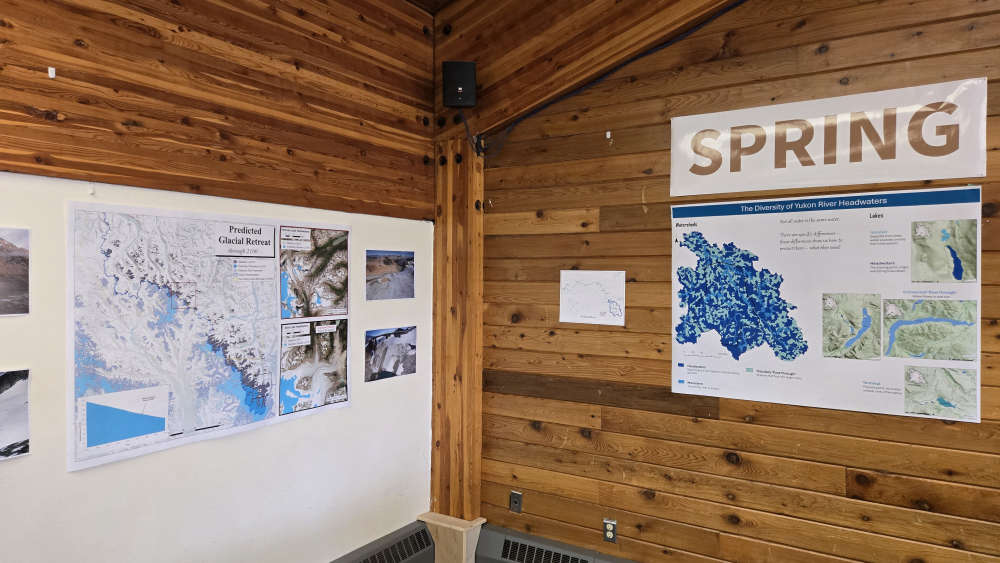
Arctic permafrost melting 70 years earlier than expected.
Permafrost is frozen soil that never melts, even in summer months. Recent studies, however, are showing that permafrost is not as permanent as scientists had thought.
A new study, published on June 10th and led by a team from the university of Fairbanks Alaska, shows Arctic permafrost melting 70 years earlier than expected. The team studied 700 km of Canadian High Arctic and found evidence of permafrost melt almost everywhere.
The team noted in their paper that "change was greatest at Mould Bay where thawing index values were 240 % above historic normals." Evidence shows that effects of permafrost melting could be monumental.
One of the main concerns of permafrost melt is the release of heat trapping gasses. Permafrost has been known to trap carbon dioxide and methane gasses. If melted, the permafrost would release those gasses. While carbon dioxide is known to be a heat-trapping gas, the real concern lies with the methane. Methane is 20-25 times more warming than carbon dioxide.
It is believed that the release of these gasses will accelerate climate change, which will cause more permafrost to melt, and more gasses to be released. It has been referred to as a feedback loop. In New York's magazine, David Wallace-Wells wrote "Arctic permafrost contains 1.8 trillion tons of carbon, more than twice as much as is currently suspended in the Earth's atmosphere,"
Flooding is another concern of permafrost thaw. If Arctic permafrost melts, it could pose a serious threat to sea-levels, and it would affect ocean salinity levels, which would, in turn, effect sea-life and ocean currents.
Reanimation of diseases that are trapped in frozen organic matter is one threat that has only recently been discovered. Wallace-wells wrote "There are now, trapped in Arctic ice, diseases that have not circulated in the air for millions of years — in some cases, since before humans were around to encounter them. Which means our immune systems would have no idea how to fight back when those prehistoric plagues emerge from the ice."
Recently in Alaska, scientists found remnants of a flu from 1918 which infected 500 million and killed 100 million. It is suspected that diseases such as smallpox and the bubonic plague may be trapped in Siberian ice. Scientists believe if that ice melts it could cause a massive epidemic.
Ultimately there is still much unknown about the effects of melting permafrost. Many scientists are growing more concerned with what that means for the future of our planet. From threats of ancient plagues to the release of heat-trapping gasses, the consequences of the melting permafrost will have to be considered, one way or another

 The end of one Star sparks the birth of another
The end of one Star sparks the birth of another
 UPDATE: Missing First Nations Haines Junction residents located
UPDATE: Missing First Nations Haines Junction residents located
 Minister's home vandalized with threats and profanity
Minister's home vandalized with threats and profanity
 Whitehorse Community Thrift Store donates $100K to community organizations.
Whitehorse Community Thrift Store donates $100K to community organizations.
 Whitehorse residential school ground searches completed
Whitehorse residential school ground searches completed
 Arrested parent accuses department of Education of escalating matters at Holy Family School
Arrested parent accuses department of Education of escalating matters at Holy Family School
 Government of Canada announce over $45M to protect Whitehorse Escarpment and Robert Service Way
Government of Canada announce over $45M to protect Whitehorse Escarpment and Robert Service Way
 Yukon government passes Health Authority Act
Yukon government passes Health Authority Act
 Regalia workshop for special traditional occasions holds in Whitehorse
Regalia workshop for special traditional occasions holds in Whitehorse
 Unity in the Community Walk for four Yukon women who died at the Whitehorse Emergency Shelter held in Whitehorse
Unity in the Community Walk for four Yukon women who died at the Whitehorse Emergency Shelter held in Whitehorse
 Testimony hearing into the deaths of four Yukon women comes to an end.
Testimony hearing into the deaths of four Yukon women comes to an end.
 Ground searches at two former Whitehorse residential school sites begin this week
Ground searches at two former Whitehorse residential school sites begin this week
 Coroner's Inquest sees footage of lifeless body ignored for more than 12 hours
Coroner's Inquest sees footage of lifeless body ignored for more than 12 hours
 How We Walk with the Land and Water holds two open houses
How We Walk with the Land and Water holds two open houses
 Whitehorse Emergency Shelter staff not trained for emergencies, inquest hears
Whitehorse Emergency Shelter staff not trained for emergencies, inquest hears
 Premier pledges to meet with Yukoners living in tents to help them find housing
Premier pledges to meet with Yukoners living in tents to help them find housing

